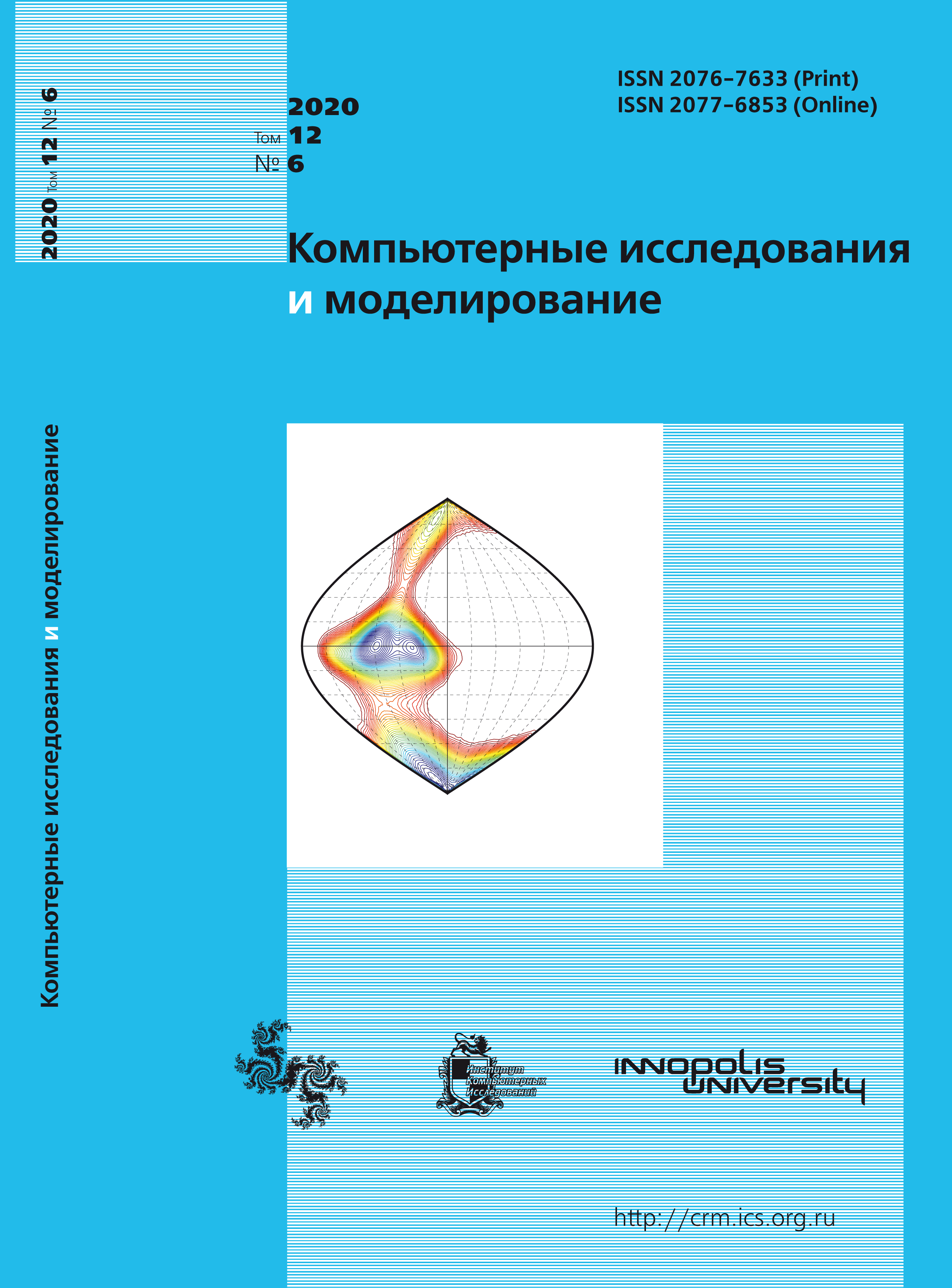All issues
- 2025 Vol. 17
- 2024 Vol. 16
- 2023 Vol. 15
- 2022 Vol. 14
- 2021 Vol. 13
- 2020 Vol. 12
- 2019 Vol. 11
- 2018 Vol. 10
- 2017 Vol. 9
- 2016 Vol. 8
- 2015 Vol. 7
- 2014 Vol. 6
- 2013 Vol. 5
- 2012 Vol. 4
- 2011 Vol. 3
- 2010 Vol. 2
- 2009 Vol. 1
From homogeneous to inhomogeneous electronic analogue of DNA
 pdf (2625K)
pdf (2625K)
In this work, the problem of constructing an electronic analogue of heterogeneous DNA is solved with the help of the methods of mathematical modeling. Electronic analogs of that type, along with other physical models of living systems, are widely used as a tool for studying the dynamic and functional properties of these systems. The solution to the problem is based on an algorithm previously developed for homogeneous (synthetic) DNA and modified in such a way that it can be used for the case of inhomogeneous (native) DNA. The algorithm includes the following steps: selection of a model that simulates the internal mobility of DNA; construction of a transformation that allows you to move from the DNA model to its electronic analogue; search for conditions that provide an analogy of DNA equations and electronic analogue equations; calculation of the parameters of the equivalent electrical circuit. To describe inhomogeneous DNA, the model was chosen that is a system of discrete nonlinear differential equations simulating the angular deviations of nitrogenous bases, and Hamiltonian corresponding to these equations. The values of the coefficients in the model equations are completely determined by the dynamic parameters of the DNA molecule, including the moments of inertia of nitrous bases, the rigidity of the sugar-phosphate chain, and the constants characterizing the interactions between complementary bases in pairs. The inhomogeneous Josephson line was used as a basis for constructing an electronic model, the equivalent circuit of which contains four types of cells: A-, T-, G-, and C-cells. Each cell, in turn, consists of three elements: capacitance, inductance, and Josephson junction. It is important that the A-, T-, G- and C-cells of the Josephson line are arranged in a specific order, which is similar to the order of the nitrogenous bases (A, T, G and C) in the DNA sequence. The transition from DNA to an electronic analog was carried out with the help of the A-transformation which made it possible to calculate the values of the capacitance, inductance, and Josephson junction in the A-cells. The parameter values for the T-, G-, and C-cells of the equivalent electrical circuit were obtained from the conditions imposed on the coefficients of the model equations and providing an analogy between DNA and the electronic model.
Copyright © 2020 Yakushevich L.V.
Indexed in Scopus
Full-text version of the journal is also available on the web site of the scientific electronic library eLIBRARY.RU
The journal is included in the Russian Science Citation Index
The journal is included in the RSCI
International Interdisciplinary Conference "Mathematics. Computing. Education"






